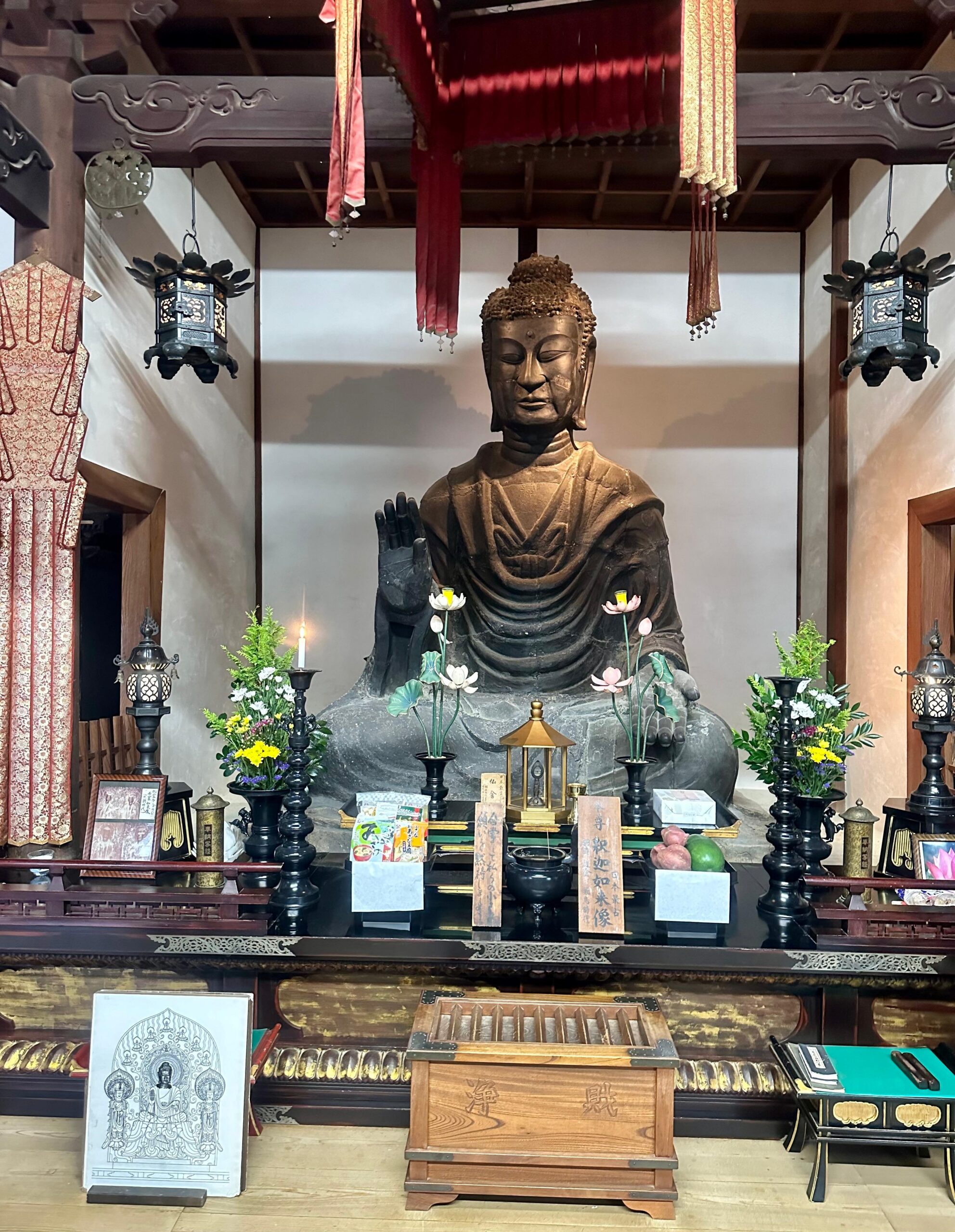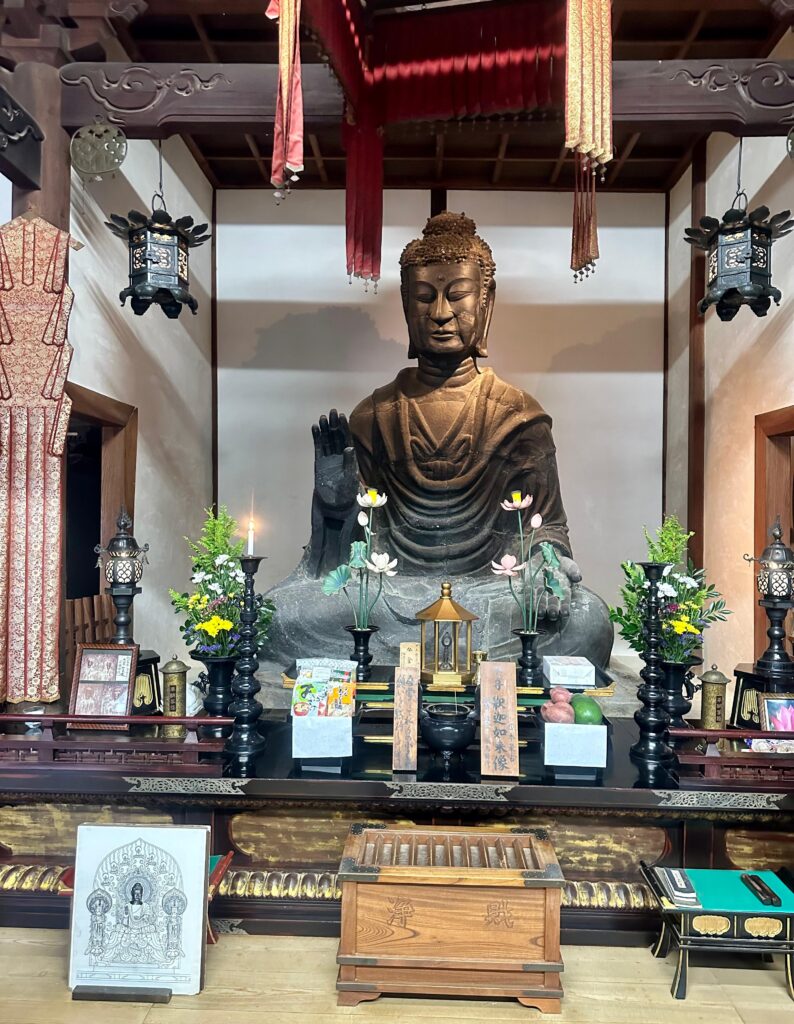
Asuka, known as the birthplace of Japan is rich in history with ancient tombs, archaeological sites and Asuka-dera—the country’s first Buddhist temple. It’s a treasure trove for history enthusiasts, offering a glimpse into Japan’s early cultural heritage.
Yoshino, on the other hand is famous for its breathtaking cherry blossoms, boasting around 30000 trees covering the mountains. It is also home to sacred temples tied to Shugendo, a spiritual practice blending Buddhism and Taoism. Among them, the revered cherry tree worshipped for centuries symbolizes Yoshino’s deep spiritual roots. The region is also known for local delicacies like Kuzu (a detoxifying sweet), shiitake mushrooms and cedarwood craftsmanship.
Our journey continued with a cycling tour through Asuka, soaking in its rural charm. We visited Ishibutai Kofun, a historic burial site from the 7th century and sampled fresh persimmons before heading to Kashihara City for a traditional meal at Ryozanpaku.
A Lesson in Japanese Hospitality
The next day, I embarked on a solo adventure eager to experience Japan’s famed efficiency firsthand. Traveling from Kashihara to Kyoto, I encountered an incredible act of kindness. Struggling with a ticket machine, a train attendant not only assisted me using Google Translate but sprinted between platforms to ensure I caught my train. This selfless gesture, emblematic of Japanese hospitality left a lasting impression.
Upon reaching Kyoto, I quickly dropped my luggage at the hotel and hopped on the Hikari Shinkansen to Hiroshima—a city synonymous with resilience.
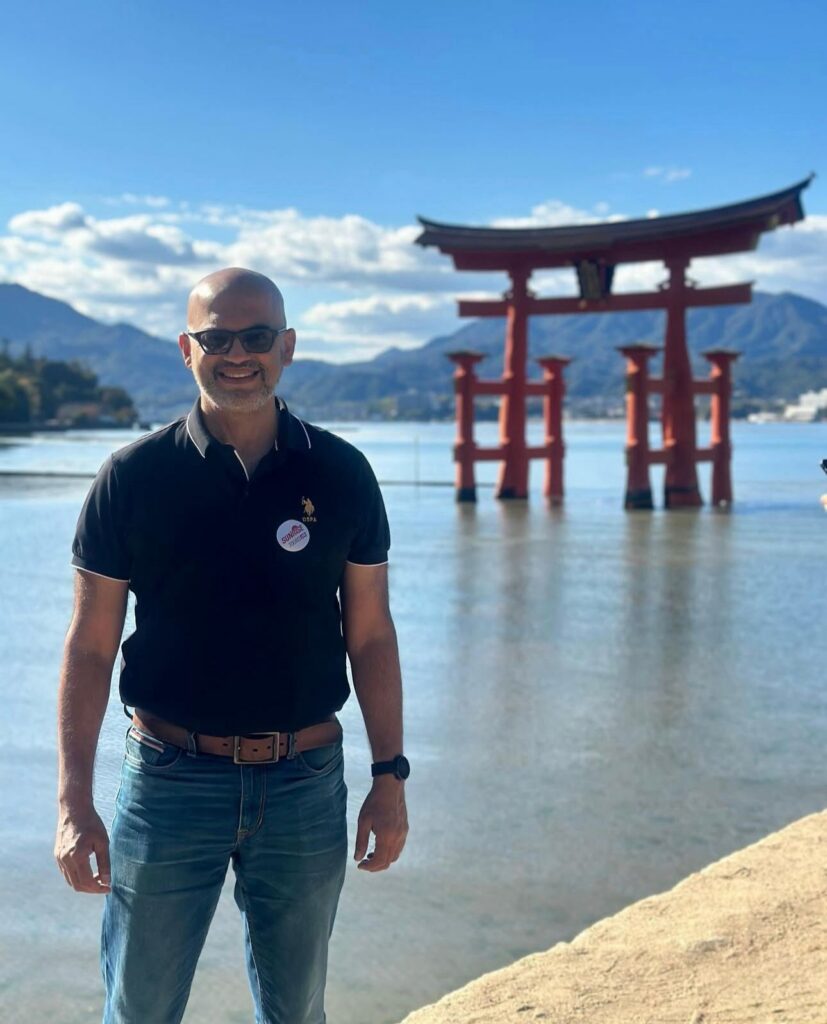
Hiroshima & Miyajima – A Journey Through History
Hiroshima, a city that transformed from devastation to a beacon of peace is home to poignant memorials like the Atomic Dome and Peace Park, commemorating the tragic events of August 6, 1945. The annual lantern-floating ceremony serves as a reminder of the horrors of war and the city’s commitment to peace.
Before exploring Hiroshima, we took a ferry to Miyajima Island famous for the Itsukushima Shrine and its towering Torii Gate – one of Japan’s most photographed landmarks. The island is known for its fresh oysters, lemon-infused dishes and the delightful Momiji Manju (maple cake).
Back in Hiroshima, I learned about its rich culture—from brush-making in nearby Kumano to its deep ties with baseball. Despite its tragic past, the city thrives as a modern metropolis bustling with life and innovation.
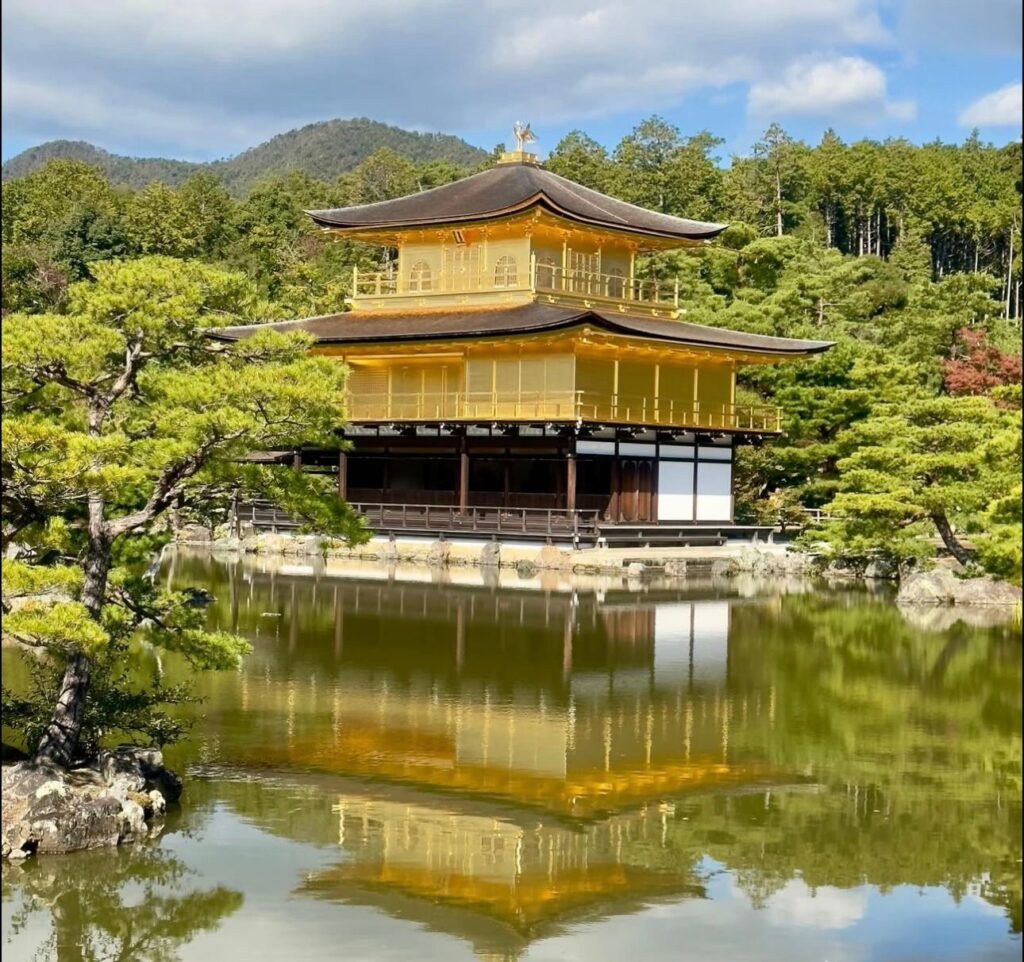
Kyoto – A City of Timeless Beauty
Returning to Kyoto, I had just a day to explore this historic city—far too little time for a place that demands at least 4 to 5 days. I began my morning at Nijo Castle, a 400-year-old Samurai stronghold, followed by the stunning Golden Pavilion (Kinkaku-ji) – it’s top floors adorned with real gold leaf. Kyoto – once Japan’s capital, is home to over 1600 Buddhist temples, 400 Shinto shrines and 17 UNESCO sites, making it a cultural powerhouse.
After spending an hour exploring its grandeur, the next stop was at the Golden Pavilion (Kinkaku-ji), a breathtaking structure built 600 years ago during the Ashikaga Shogunate era. Originally designed as a retreat for tea ceremonies and meditation, it was later converted into a Zen temple. The shimmering golden reflection in the surrounding pond adds to its ethereal beauty.
The temple grounds are lined with Ginkgo trees which transform into a stunning golden hue in autumn. Interestingly, these trees are among the oldest species in the world and have unique reproductive characteristics—male trees produce pollen, while female trees bear seeds encased in fruit-like structures. However, the female trees emit a strong odour when their seeds fall which is why urban planners often prefer planting male Ginkgo trees in city landscapes.
Kyoto stands apart from Japan’s modern metropolises, as regulations prohibit buildings taller than 45 meters ensuring unobstructed views of the surrounding mountains. Our journey continued to Daitoku-ji Temple where we admired a traditional Zen garden, symbolizing mountains (rocks) and oceans (raked white sand).
Fushimi Inari Shrine & Spiritual Landmarks
One of Kyoto’s most iconic landmarks – the Fushimi Inari Shrine, is renowned for its thousands of vibrant Torii gates, creating an enchanting tunnel-like pathway up the mountain. Dedicated to the God of Agriculture, this shrine serves as the head of over 30000 Inari shrines across Japan. Nearby, we visited the Sanjūsangendō Temple, famous for its 1001 life-sized statues of Kannon, the Goddess of Mercy. The temple’s long corridor is also the site of an annual archery competition, adding to its cultural significance.
Continuing our exploration, my next stop was at the Kiyomizudera Temple, known as the “Pure Water Temple.” It’s large wooden stage offers breathtaking views of Kyoto, making it one of the most scenic spots in the city. Just a short walk from Gion, the historic Geisha district, this temple is a must-visit, especially in autumn when the maple trees turn fiery red.
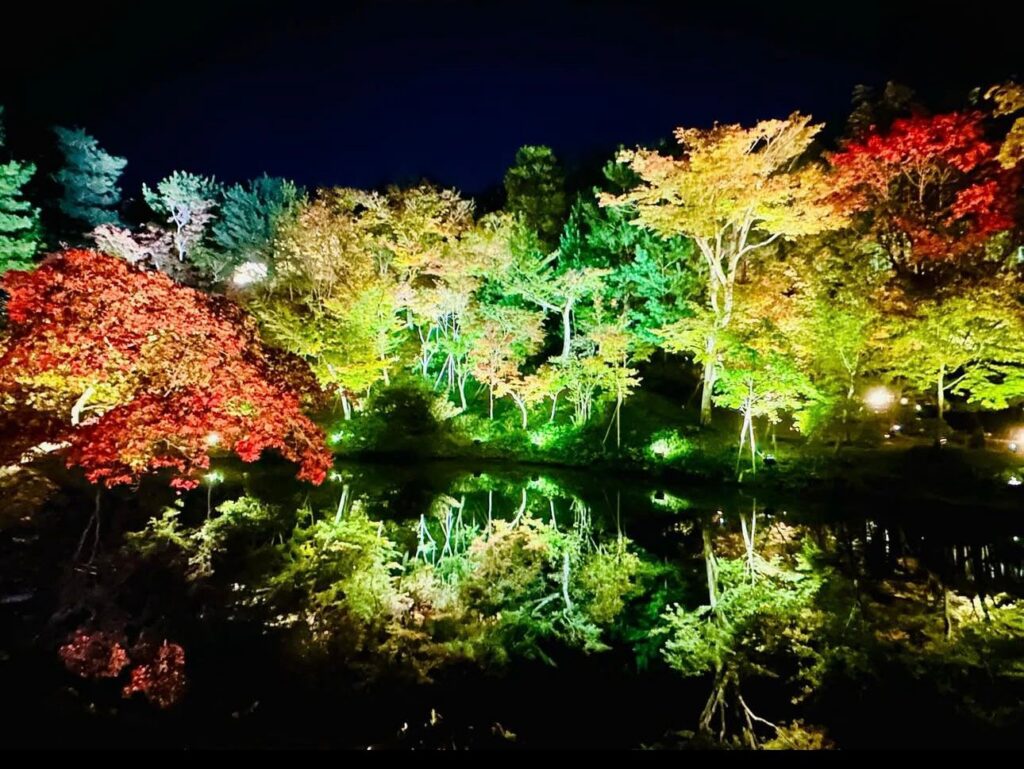
An Evening in Kyoto & Farewell to the Ancient Capital
As night fell, I made my way to Kodaiji Temple renowned for its illuminated gardens during the autumn months. Walking through Shirakawa Lane, a picturesque alley straight out of a postcard was the perfect way to soak in Kyoto’s charm one last time.
With Kyoto behind me, it was time to move on to my next destination.
If you are looking to plan an experiential holiday to Japan or anywhere else in the world, I’d love to help—just reach out!
Stay tuned for my next blog!

